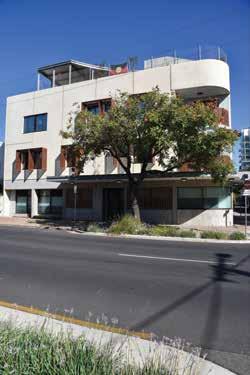
8 minute read
Indigenous students are the majority at Tika Tirka accommodation
Indigenous students are the majorit y at Tika Tirka accommodation
Before Tika Tirka, which means stay and learn in Kaurna, there was no accommodation available that could cater to the needs of Aboriginal tertiary students. Tika Tirka provides Aboriginal and Torres Strait Islander students aged 18 to 26 with an affordable, safe, and culturally appropriate home away from home while they study in Adelaide.
Advertisement
Tika Tirka student accommodation, located in Adelaide’s CBD. Wayne Gibbings is the State Manager of Community Housing Limited, the company aims provide safe and affordable housing to those who need it most in South Australia.

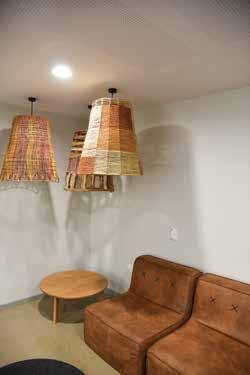
“The State government with Commonwealth government funding, initiated Tika Tirka which is effectively an apartment complex built to provide housing for Aboriginal students attending university and TAFE courses,” Wayne Gibbings says.
“We’ve got students doing a range of courses from, medicine, engineering, media studies and nursing. Those students generally come from regional areas of South Australia.”
Ngarrindjeri and Narrunga university student, Michael Cullen says Tika Tirka provides stability which allows him to focus on his studies.
Michael found out about Tika Tirka after a recommendation from his student support officer at university where he studies a Bachelor of Psychological Science.
“She (support officer) knew my history and my troubles with finding a secure place to stay and did everything in her power to get me here.”
Students can make the most of the modern facilities on offer at the apartment

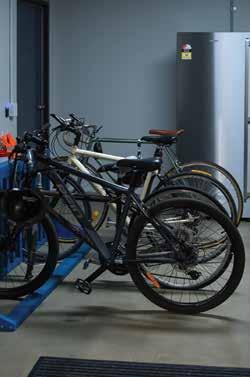
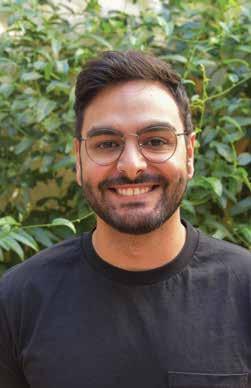
Michael Cullen, a student who lives at Tika Tirka.
block that can house up to 20 people. Indigenous students aged 18-26, enrolled in tertiary education and eligible for ABSTUDY can apply to live at Tika Tirka. “The cohort here is Indigenous, so because they’re people from the land, you don’t just want to throw them into Adelaide,” Michael explains. “Tika Tirka reduces the impact of culture shock and paves the way for them to build the resilience to brave the world that they haven’t really experienced before.” Housing officer Ronald Rankine is proud to work at a facility where Aboriginal and Torres Strait Islander people are the majority. “Knowing that students are coming here, to a where it’s for Indigenous only, I think that’s sort of reassuring on a trip coming down, because most places they are the minority.” “We’ve also got two wonderful support workers in the team who give students the services that they need, like mentoring, health, cooking and just general living support.”
Want to know more? Email: Tikatirka@sa.gov.au or Phone: (08) 8470 9491
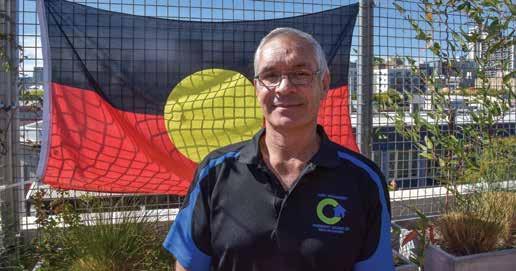
Ronald Rankine, the Housing Officer at Tika Tirka.

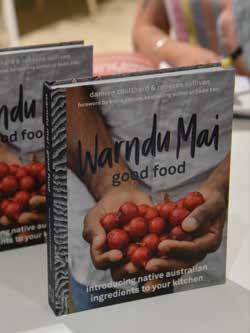
Founders of Warndu, Damien Coulthard and Rebecca Sullivan, have a goal to see native ingredients in every Australian pantry. Their best-selling cookbook, Warndu Mai, may inspire you to start cooking with their range of herbs, spices and seeds. Warndu means ‘good’ in the Adnyamathanha language and reflects the brand’s aim of providing nutritious food that is good for the body and mind. “We see Warndu being an access point, a gateway for not only the Adnyamathanha nation, but a lot of Aboriginal diversity and nations actually share their story related to food,” Damien explains. Aboriginal people like Damien, a proud Adnyamathanha and Dieri man, are founding business which celebrate and educate customers about their culture and connection to country. Damien’s partner in business and life, Rebecca Sullivan started the Granny Skills movement, which aims to protect the skills, heritage, and traditions of our Elders. After meeting Damien, she learnt more about the benefits of eating native, for people and planet. They combined Damien’s knowledge and skills as an Indigenous educator at Lefevre High School, with Rebecca’s culinary background to found Warndu. Together they saw a gap – while more Australians prioritised eating and living sustainably, they were missing out on the health benefits of using native ingredients. “The easiest place to learn how to cook, is in the spice cabinet and most of the native foods that we use, they’re coming in a dried form. We have 50 plus foods in our shop, and we wrote the book with the intention of it being a good place for people to start,” Rebecca says. Damien and Rebecca’s top three native ingredients: native pepper, lemon myrtle, wattleseed Warndu Mai’s recipes use ingredients from across Australia and Damien and Rebecca believe the cookbook can be an icebreaker to the 250 Aboriginal nations and 800 dialects. Their latest collaboration with Haigh’s was an opportunity for customers to stumble across native ingredients combined with the familiar taste of chocolate. Flavours like Milk Chocolate with Finger Lime and Dark Chocolate with Davidson Plum.
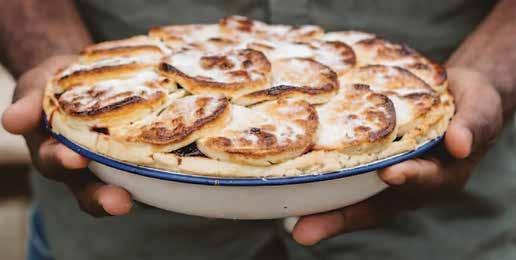
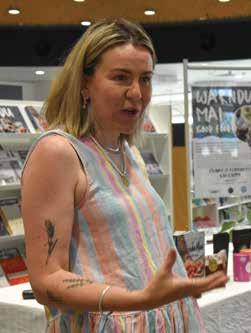

“If we kind of think about food as that vehicle, people are tasting chocolates through Haigh’s and they can ask, where is that native food from? Hopefully, it’s encouraging people to travel the space and learn from Aboriginal communities in those areas about those foods, the origin story, the language, and their kinship ties,” Damien says. Warndu’s aim is to regenerate culture, traditions, community, health and soil. Colonisation interfered with the sustainable food systems and health of Aboriginal people – western farming changed the environment making bush foods harder to find. “The studies say that the more indigenous people have access to country, but also access to their traditional foods, the better outcomes there are from a health perspective, not just physical health, but mental health,” Rebecca says.
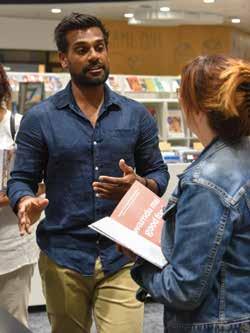
A non-traditional diet is typically higher in saturated fat, sugar, salt and lower in fibre than a traditional Indigenous diet. Compared to non-Indigenous Australians, Indigenous Australians have higher levels of diet related disease such as diabetes and heart disease.
“We need to create hubs and access points for all people to access these foods and improve their diet and their wellbeing. It’s about getting back to your natural state and not consuming highly processed carbohydrates, fats and sugar that ultimately impact the way you feel and think,” says Damien.
“We’re not just a food brand we have a home and body range, we’ve just started running our education program and we do catering and events as well,” Rebecca says.
Damien and Rebbeca also own a tree farm in the Clare Valley, where they live and are continuing to grow Warndu. They are utilising the 90-acre property with plans for an education centre with a demonstration garden to show local farmers how to grow native foods.
“We really actually have moved into seeing ourselves as an environmental brand more than anything and we want to create a climate resilient community,” Rebecca says.
“We’re helping people really understand the significance of environment, food and the importance of community identity,” Damien adds. “We have massive plans, and these plans could happen in one to two years or if they happened 20 years, we just want to grow sustainably.”
Warndu Recipe: Quandong (Urti) Native Peach Pie
Words and recipe by Rebecca Sullivan Native Peach is probably one of the more common Australian Native foods in our pantry today. The perfect fruits come in many shades of pink right through to jewel like red. A popular fruit for its tartness but also widely used for the large seed/kernal inside which is used to make jewellery. They are also great little Vitamin C boost too. Damien’s fondest childhood memories are of picking Quandong (urti in his language) all around the Flinders Ranges. They would pick bags full and eat them both fresh and freeze some for later days. His Nana Barb would always make Urti Pie too. It is definitely our favourite Quandong recipe, so we wanted to share it with you. Ingredients
For the pastry 2 cups (300 g) self-raising flour 1 cup (150 g) plain flour 200 g butter, chilled and chopped 125 ml iced water pinch of salt sugar, for sprinkling on pastry top For the filling 500 g fresh (or frozen and thawed) quandong, for sprinkling ¾ cup caster sugar, plus extra 1 cup water (just enough to cover the quandong) or orange juice 1 egg, beaten 2 tbsp cream
Method
1. Combine the fruit with the sugar and orange juice, stir, cover and let stand for at least five minutes, or, if you have time, leave overnight. This will create a thicker filling. 2. Transfer the quandong mixture to a saucepan and cook on low for 10–15 minutes, stirring frequently. 3. Preheat oven to 180°C. To make the pastry: Place flours and butter in a large bowl and rub with your fingers until it resembles breadcrumbs. Add water and mix with a butter knife until the pastry just comes together. Divide into 2 portions and roll each out to a 28 cm circle on a well-floured surface. 4. Line a lightly greased baking tin with one circle of pastry. Prick the base with a fork. Fill with quandong filling, and trim the edge of the pastry. Cut remaining pastry into smaller circles using a 7 cm round cutter. 5. Mix the egg and the cream together. Brush the edges of the pastry with mixture. Lay circles of pastry over the pie, overlapping slightly. Brush the top of the pie with the egg mixture. Sprinkle with sugar. Bake for 30–35 minutes, or until golden. Warndu sells Quandong in freeze-dried kibble so you can enjoy this flavour year-round. Sometimes this is mispelt as qandong. warndu.com



